I need to show all categories, even categories with no items.
I have this query.
SELECT
i.id,
incident_active 'Approved',
incident_verified 'Verified',
category_title 'Category',
ParentCategory 'Parent Category'
FROM
incident i
INNER JOIN
incident_category ic ON i.id = ic.incident_id
RIGHT JOIN
incident_person ip ON i.id = ip.incident_id
RIGHT JOIN
(SELECT
c1.id,
c1.parent_id,
c2.category_title ParentCategory,
CONCAT_WS(' -> ', c2.category_title, c1.category_title) category_title
FROM
category c1
left outer join category c2 ON c1.parent_id = c2.id WHERE c1.parent_id != 0) AS c ON c.id = ic.category_id
WHERE incident_dateadd > DATE_SUB(NOW(), INTERVAL 1 MONTH)
which return:

and this query:
SELECT
c1.id,
c1.parent_id,
c2.category_title ParentCategory,
CONCAT_WS(' -> ', c2.category_title, c1.category_title) category_title
FROM
category c1
left outer join category c2 ON c1.parent_id = c2.id WHERE c1.parent_id != 0
which return:

I've read several times this answer but I can not see why my right join isn't working.
The first result set should have 8 more columns, the columns of categories which parent is Protesta
UPDATE
I got it working whith the following query:
SELECT * FROM (SELECT
i.id,
incident_title 'Título',
incident_description 'Descripción',
incident_date 'Fecha',
incident_active 'Aprobado',
incident_verified 'Veficado',
person_first 'Nombres',
person_last 'Apellidos',
person_email 'Email',
category_id
-- category_title 'Categoría',
-- ParentCategory 'Categoría Padre'
FROM
incident i
INNER JOIN
incident_category ic ON i.id = ic.incident_id
RIGHT JOIN
incident_person ip ON i.id = ip.incident_id
WHERE (incident_dateadd > DATE_SUB(NOW(), INTERVAL 1 MONTH) OR incident_dateadd IS NULL)) a
RIGHT JOIN
(SELECT
c1.id,
c1.parent_id,
c2.category_title ParentCategory,
CONCAT_WS(' -> ', c2.category_title, c1.category_title) category_title
FROM
category c1
left outer join category c2 ON c1.parent_id = c2.id WHERE c1.parent_id != 0) b ON a.category_id = b.id
Although I still don't understand why it was not working with the first version, in my mind both queries are equivalent.
If anyone could explain the differences...